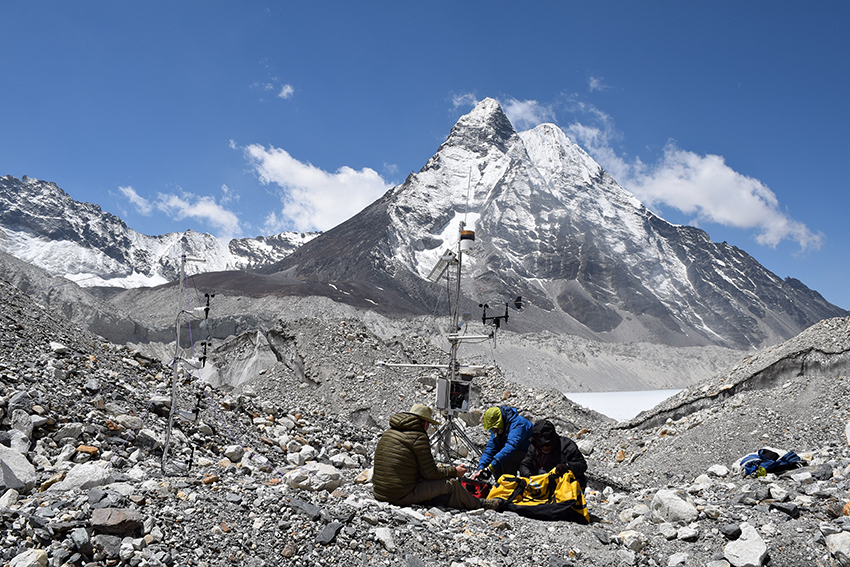A June report from UT researchers measures the risk posed by lakes in the Himalayas in order to protect nearby communities from flooding.
UT engineering professor Daene McKinney worked over the course of 15 years with a team of researchers to build a new method of assessing risk to glacial lakes over large regions in Nepal.
McKinney said this allowed the main disaster planning agency to decide which lakes pose the greatest flood risks.
“The aim of this study is to conduct a holistic hazard and risk assessment of all the glacial lakes in the Nepal Himalaya,” the study, published in Remote Sensing, stated. “To accomplish this goal, a remote sensing glacial lake survey for the Nepal Himalaya was performed for 2000 and 2015 using Landsat satellite imagery.”
According to the study, 11 lakes in the Himalaya are at very high risk of flooding, and 31 lakes are at high risk.
Scott Watson, a doctoral student at the University of Leeds, studied glacial lake outburst floods in Bhutan for his masters degree. Watson said he initially became involved with the project through David Rounce, one of McKinney’s former Ph.D. students, after they met on Khumbu Glacier in Nepal while they were both doing fieldwork.
“The collaboration came about after that chat on the glacier,” Watson said. “I knew (Rounce and McKinney) had a huge amount of field and remote sensing experience, so it was the perfect project to be involved with. They are also a great bunch of people, which makes collaborations especially worthwhile, and we’ve since met several times in Nepal.”
According to the study, glacial lake outburst floods can be triggered by avalanches that enter the lake and cause a tsunami-like wave.
“The sudden release of stored lake water … can have devastating socioeconomic consequences, including loss of life, buildings, bridges, transportation routes, arable land and hydropower systems,” the study stated.
McKinney has studied river basin management around the world since 1995. In 2008, the United States Agency for International Development approached him to provide technical support in Peru.
This opened the floodgates on his work with high mountain water issues, such as floods and droughts, in Peru and Nepal, McKinney said.
But in light of the environmental threats of climate change, McKinney said his research is vital to not just the scientific community, but also to the rural communities in Nepal and urban communities in Peru that it directly affects.
“The investment in our research has aided rural communities in Nepal, rural and urban communities in Peru and governments in both countries,” McKinney said.
Agencies and programs such as USAID, the National Science Foundation, the Fulbright Scholar Program and the Mountain Institute have aided McKinney to help these communities deal with concerns of insecurity and unreliability in their water resources.
McKinney said the team plans to work with researchers in other fields to study the relationship between people and water systems.
“We are now engaged in interdisciplinary work with geographers and anthropologists to understand the socio-hydrology involved in these critical human and natural systems,” McKinney said. “This is a new area of research and we will continue in this direction.”















